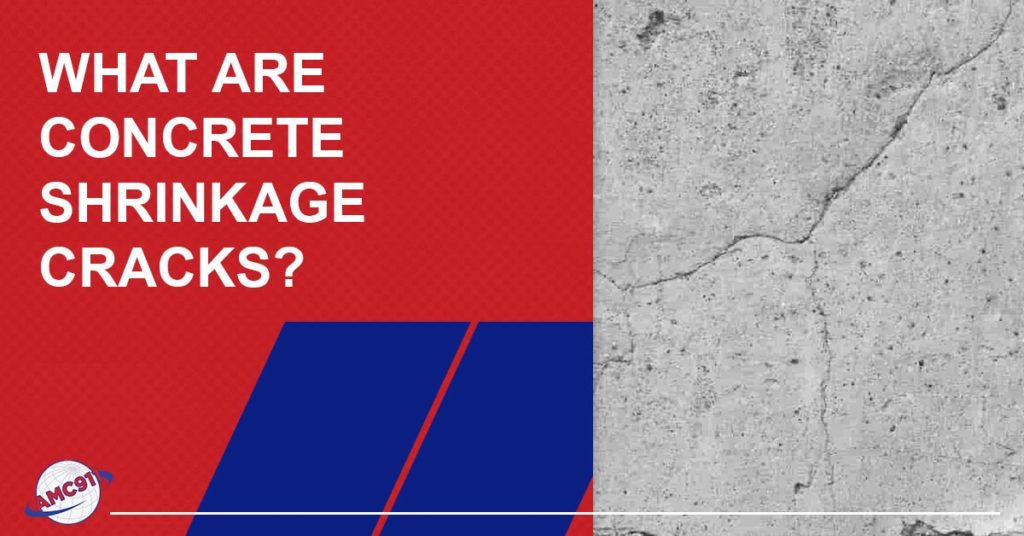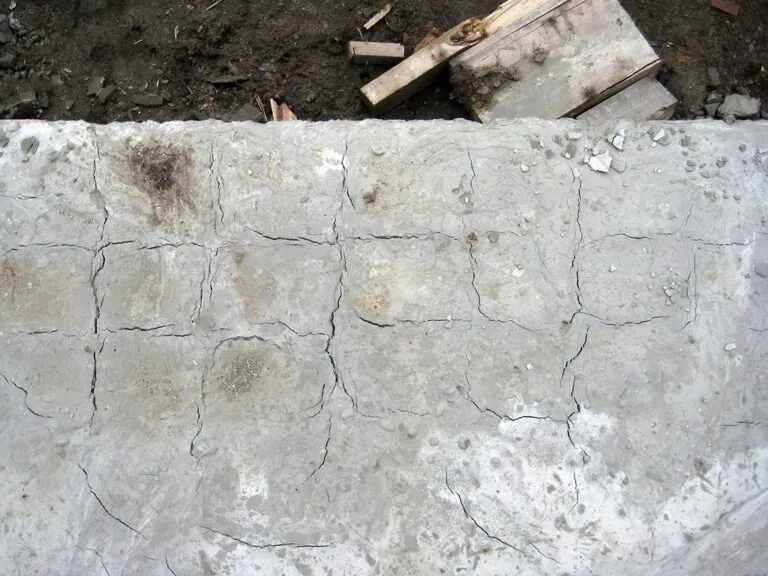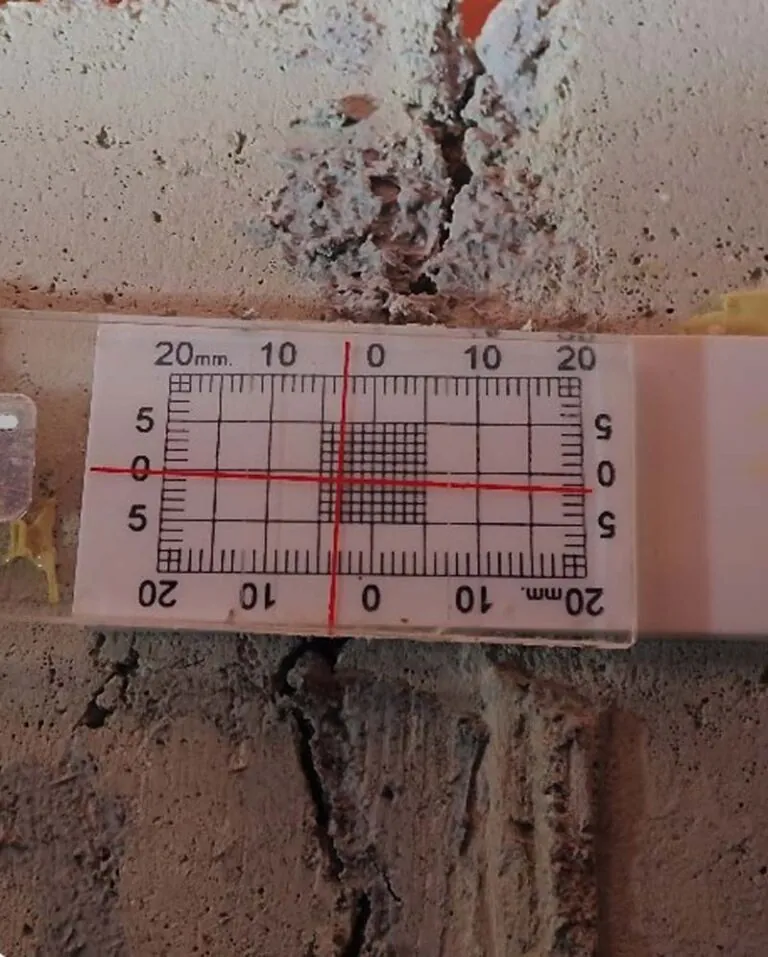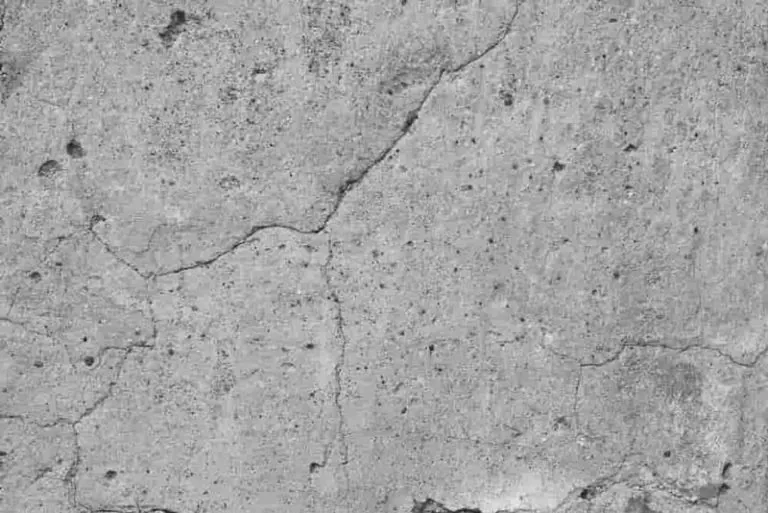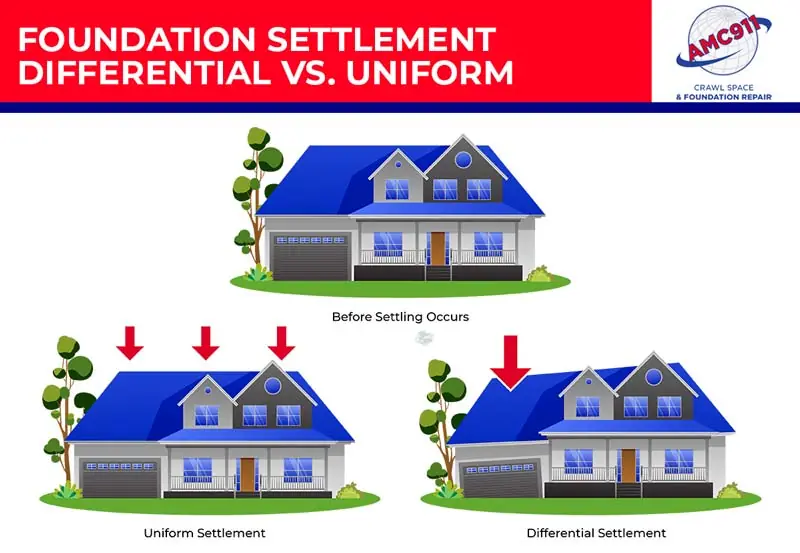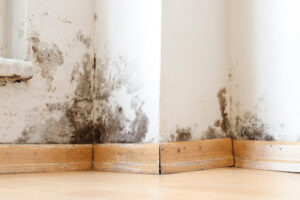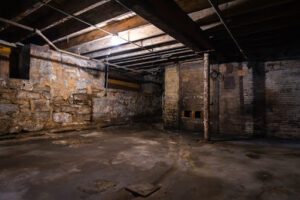Wondering what concrete shrinkage cracks are? If so, this short article has what you need. We’re going to cover what concrete shrinkage cracks are, what causes them, what they look like, and more.
What Are Concrete Shrinkage Cracks?
Concrete shrinkage cracks are non-structural cracks in poured concrete. They’re very common. In fact, you should even expect them. However, because they’re non-structural crack, they don’t affect the concrete’s ability to do what it’s supposed to do. In other words, they’re just ugly. Concrete shrinkage cracks are usually not even repaired.
What Causes Concrete Shrinkage Cracks?
Concrete shrinkage cracks are caused by shrinkage during the concrete drying process.
Concrete is a porous substance and acts something like a sponge. When concrete soaks up water, it expands. When concrete dries out, it shrinks like a sponge shrinks when it loses moisture. Freshly poured concrete is 20-25% water. When it dries, shrinkage cracks form within a few hours of pouring the concrete. They’re often called “plastic shrinkage cracks” because the concrete isn’t hard when the cracks appear.
Here’s how concrete shrinkage cracks happen…
Concrete shrinkage cracks happen because the surface of the concrete dries faster – and shrinks – because it’s exposed to air. The concrete not on the surface dries more slowly and, therefore, doesn’t shrink at the same rate as the surface. These two different shrinkage rates create tension, and concrete shrinkage cracks develop.
Although there are ways to reduce the chance of shrinkage cracks, eliminating them is next to impossible. They’re always going to happen. They’re a fact of concrete life.
So, concrete shrinkage cracks form because the surface of the concrete dries faster. This means concrete shrinkage cracks are more likely to happen when…
- You pour concrete during hot weather. This is because the surface dries faster during hot weather.
- You pour concrete during very windy conditions. Again, the surface of the concrete dries faster when wind blows over it.
- There’s too much water in the concrete mix. Concrete needs water, but not too much water. Since concrete shrinks when it dries out, too much water in the concrete mix means the concrete below the surface will take even longer to dry out and shrink. This creates greater tension between the concrete’s surface – which dries fast – and the concrete below the surface. Therefore, concrete shrinkage cracks are more likely to happen.
For more information about concrete cracks, see Types of Cracks in Concrete Slabs.
What Do Shrinkage Cracks Look Like?
Concrete shrinkage cracks are hairline and barely visible. If you see another kind of crack, it probably wasn’t caused by shrinkage.
For more information about cracks in concrete, see, How to Repair Large Cracks in A Concrete Garage Floor.
What Shrinkage Cracks Don’t Look Like
Concrete shrinkage cracks will not be…
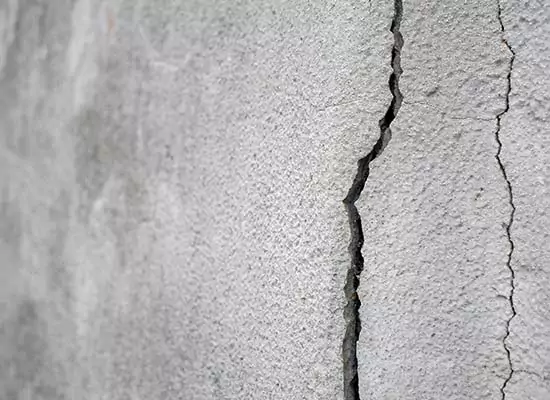
Vertically displaced
If the crack is caused by concrete shrinkage, one side of the crack will not be higher than the other. Cracks that are vertically displaced are usually caused by differential settlement. See the graphic below.
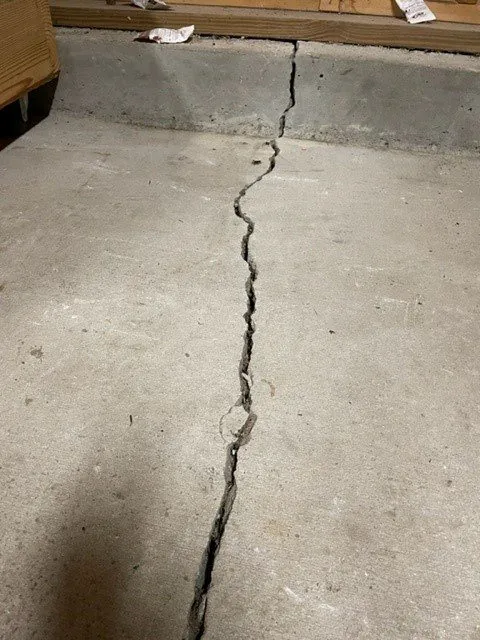
Continuous
If you see a crack without breaks, it probably wasn’t caused by concrete shrinkage. Concrete shrinkage cracks are meandering and discontinuous.
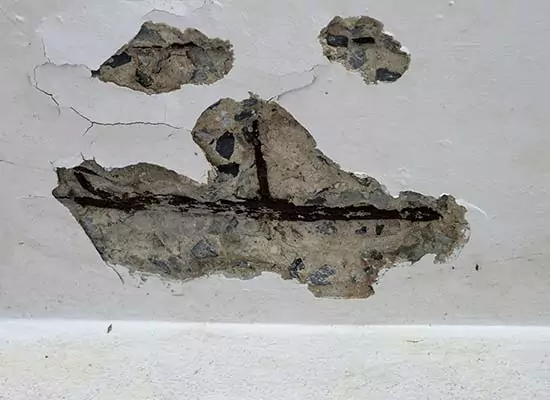
Accompanied by corrosion
Cracks accompanied by corrosion were probably caused by rusted rebar. You won’t see any corrosion on the slab’s surface with concrete shrinkage cracks.
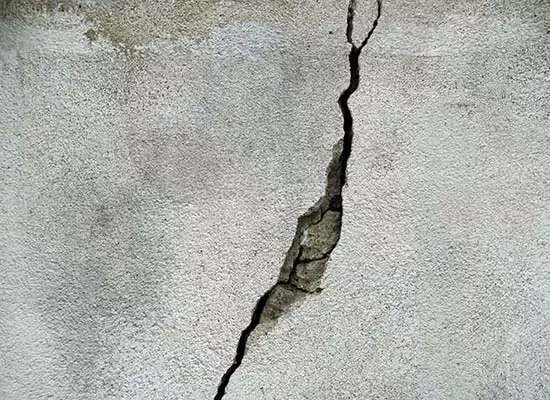
Wider than hairline
If the crack is wider than hairline – that is, if you can fit a coin into it – it’s almost certainly not a concrete shrinkage crack but something more serious.
Why Does Concrete Crack? – Other Types Of Cracks In Concrete Slabs
Concrete shrinkage cracks are just one type of crack. Concrete slabs such as sidewalks, driveways, and pool decks can crack for other reasons, including:
- The strength of the concrete wasn’t right for the job - There are different strengths of concrete. The concrete used in a residential driveway doesn’t need to be as strong as the concrete used on a street with heavy vehicle traffic.
- There aren’t enough control joints – The lines in a concrete sidewalk are called “control joints.” Contractors place those joints to tell the concrete where to crack. If there aren’t enough control joints, the concrete will crack where you don’t want it to.
- Cracks caused by expansion – Heat makes concrete expand and push against whatever is in the way., causing cracks.
- The freeze-thaw cycle – Soil expands when it freezes and then shrinks when it thaws. This back-and-forth freeze-thaw cycle creates up-and-down movement that can cause the concrete to crack.
- Tree roots – We’ve all seen examples of this. Tree roots push up against the concrete, causing cracks.
- Settlement – Soil needs to be adequately compacted before concrete is poured on top of it. If this isn’t done, the concrete will settle into the soil after it’s poured. This could cause cracks.
- Erosion under the slab – Soil erosion under a concrete slab will cause voids to form. If the slab settles into those voids, cracks could appear.
- A large tree was removed – If you remove a large tree with roots under the slab, the roots will decompose, creating voids under the slab. Settling into those voids could cause cracks.
While concrete shrinkage cracks may look ugly, they don’t generally affect how the concrete functions. Concrete cracks larger than hairline probably weren’t caused by shrinkage. If you see any larger cracks, they need to be looked at by a professional.
Check out our complete guide to foundation cracks.
If you’re concerned about concrete cracks and are in our service area – Hampton Roads and the surrounding area – contact us today for an inspection and repair estimate.

